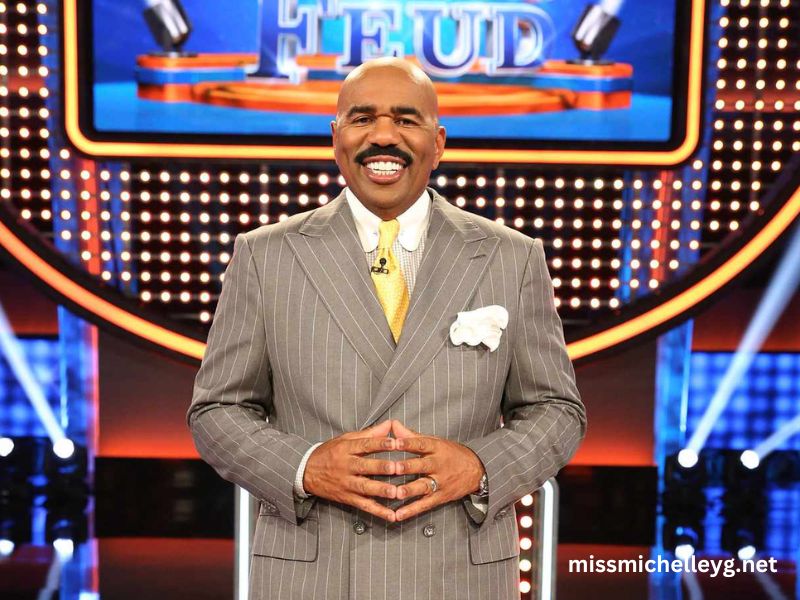Game shows have been a beloved source of entertainment for decades, and one of the iconic features of these shows is the cards game show hosts hold during the broadcast. These cards are more than just props—they serve several purposes, including revealing answers, keeping track of contestants’ scores, and creating an engaging experience for the audience. But what exactly are these cards called, and why do hosts rely on them to facilitate the show?
In this comprehensive article, we will explore the various aspects of the cards that game show hosts use, from their role in the show’s structure to their design and the impact they have on the viewer’s experience. By the end, you’ll have a deeper understanding of why these cards are crucial to the smooth operation of your favorite game shows.
What Are the Cards Game Show Hosts Hold Called?
When it comes to the cards game show hosts hold, they are commonly referred to as “cue cards” or “question cards.” These cards serve as a quick reference for the host, helping them stay organized and efficient throughout the game. While the specifics can vary depending on the type of game show, the primary function of these cards is to guide the host and ensure the game runs smoothly.
Purpose of Cue Cards in Game Shows
Cue cards are not just props or accessories that hosts carry for show—they are essential tools that help maintain the pacing and flow of a game show. Let’s look at some of the primary purposes of cue cards:
- Revealing Questions or Clues In quiz-style game shows, such as Jeopardy! or Who Wants to Be a Millionaire?, the cards contain the questions or clues that the host will present to the contestants. The host uses the cue cards to read these questions aloud, ensuring that the audience and contestants stay on track with the game.
- Scoring Information Some shows, like Family Feud or Wheel of Fortune, require the host to keep track of the scores as the game progresses. The cue cards might list the current score of each contestant or team, helping the host quickly refer to the information when announcing the next round.
- Instructions for the Host Beyond the questions or clues, the cue cards often contain instructions that help the host maintain the structure of the show. This might include reminders for the host to introduce segments, explain rules, or announce special events or prizes. These cards help the host stay organized, especially in fast-paced game shows.
- Facilitating Audience Engagement Game show hosts must engage with the audience, both in the studio and at home. The cue cards may also contain scripted lines to help the host interact with the crowd, ask them questions, or encourage participation. For example, the host may read out audience trivia questions or use catchphrases that enhance the show’s entertainment value.
- Timing and Transitions Many game shows rely on specific time limits to add suspense or create tension. The cue cards help hosts stay on schedule by reminding them when to switch segments, move on to the next question, or wrap up a round.
Different Types of Game Show Cards
While the general term “cue cards” is commonly used, there are different types of cards used for specific purposes within various game shows. These cards can differ in their design, function, and size depending on the format and complexity of the show.
- Question Cards These are the most recognizable type of cards that hosts hold in quiz-based shows. They contain the questions that contestants must answer or the clues that they need to solve. The cards are typically simple in design, with the question written clearly for the host to read out loud.
- Answer Cards On some shows, such as The Price Is Right, the host might hold answer cards that contain the correct answers or the final results of a round. These answer cards help the host quickly reveal the results once the contestant has made their guess or completed a task.
- Score Cards Scorecards are crucial for keeping track of contestants’ progress in games that involve points or winnings. These cards might be updated regularly by the host as the game progresses. In some shows, such as Deal or No Deal, the host may hold scorecards with values or amounts that correspond to the prizes contestants are playing for.
- Game Instructions Cards These cards contain detailed instructions for the host regarding how each round of the game is to be conducted. This might include specifics like the number of contestants, the duration of each round, or the type of questions being asked. These cards help the host stay in control of the game format and rules.
- Special Event or Bonus Cards In some game shows, there are special rounds, bonus features, or surprise twists that require the host to reveal certain information at the right moment. These cards may contain information on bonus rounds, prize details, or hidden elements that the host is tasked with introducing during the broadcast.
Why Do Game Show Hosts Use Cue Cards?
The use of cue cards is essential for maintaining the flow and organization of a game show. Hosts rely on them to ensure that every aspect of the show runs seamlessly, without any disruptions or delays. Let’s dive into the reasons why these cards are so important:
- Efficiency Game shows often have a fast-paced format, with rapid transitions between rounds, questions, or contestant interactions. Cue cards help the host stay organized, allowing them to quickly reference important information without breaking the flow of the show.
- Minimizing Mistakes Even seasoned hosts can make mistakes or forget details during a live broadcast. Cue cards reduce the chance of errors by providing a reliable reference for everything the host needs to say or do. The cards act as a safeguard against potential slip-ups.
- Time Management Game shows are typically timed, with certain rounds or activities having strict time limits. Cue cards help hosts keep track of time and ensure that the show remains within its allotted runtime. This helps maintain the suspense and excitement that audiences love.
- Clear Communication Clear communication is essential for both the contestants and the audience. By having the questions, answers, and game instructions written on cue cards, hosts can ensure that everyone understands what’s happening at any given moment, enhancing the overall viewing experience.
- Scripted Interaction While some game shows allow for improvisation, most hosts follow a script that includes specific lines or instructions for audience engagement. The cue cards help with scripted elements, ensuring that the host delivers their lines effectively and in the right order.
The Design of Game Show Cards
The design of the cards that game show hosts hold is simple yet functional. The layout is typically straightforward, with large, easy-to-read fonts for the host to quickly read off. Some common features of game show cards include:
- Bold Text The text on the cards is often large and bold, making it easier for the host to read at a glance. The cards may also use clear, legible fonts to ensure that the information is easily understood.
- Color Coding In certain game shows, different types of cards might be color-coded to make it easier for the host to distinguish between them. For example, question cards might be blue, while scorecards might be red or green. This color-coding helps prevent confusion during the fast-paced moments of the show.
- Illustrations or Graphics Some game shows feature cards with small illustrations, logos, or graphics to enhance the visual appeal. These visuals can make the game show feel more dynamic and engaging, especially for audience members at home.
- Size and Shape Game show cards are typically designed to be a standard size, making them easy to hold and manage. However, their size may vary depending on the specific requirements of the show. In some cases, the cards might be larger or smaller to fit the needs of the production.
How Hosts Handle the Cards During the Show
Game show hosts often juggle several cards at once, especially during fast-paced segments. They need to manage the cards efficiently while maintaining their role as the face of the show. This requires a certain level of skill and preparation.
- Practice Hosts typically practice with the cards before the show to familiarize themselves with the information. This ensures they know where to look for specific answers and can quickly flip through the cards when needed.
- Multiple Hosts In some cases, game shows have more than one host, and each host may have different sets of cards to manage. This allows for smoother transitions between segments and helps maintain the show’s energy.
- Audience Interaction Some game show hosts may use the cards to engage with the audience. For example, they may ask trivia questions from the cards or read out special announcements. This adds a personal touch and makes the viewers feel more connected to the show.
Conclusion
In the world of game shows, the cards that hosts hold are essential tools that help keep the show running smoothly. Whether they’re cue cards, question cards, or scorecards, these items ensure that the host has everything they need to facilitate the game, keep the contestants engaged, and provide an enjoyable experience for the audience. By understanding the different types of cards and their functions, you can gain a greater appreciation for the role they play in making game shows successful and entertaining.






